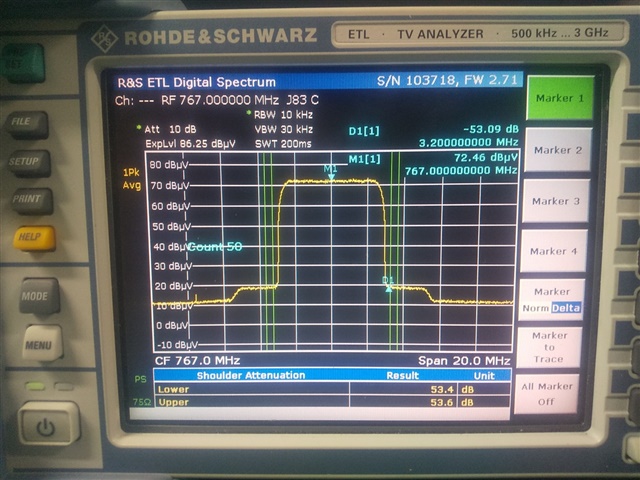Other Parts Discussed in Thread: LMK04821
Hi,
When the NCO is set to 767MHz, a signal of about 53dBc (like phase noise) is generated from the modulated signal in the range of about 10MHz centered on the modulated signal of about 6MHz.
With the same modulated signal input, if the NCO is set to 159MHz, there is no noise.
The clock of the DAC is 84.384MHz.
DAC operation at 2025.216MHz with x24 interpolation,
The RF output center frequency is converted from 93MHz to 767MHz by NCO.
Noise increases when the NCO is set to a high frequency.
If it is phase noise, is it due to the sampling clock of the DAC?
Could you give me some advice on the cause and solution?
767MHz

159MHz

Best regards,
Hiroshi

